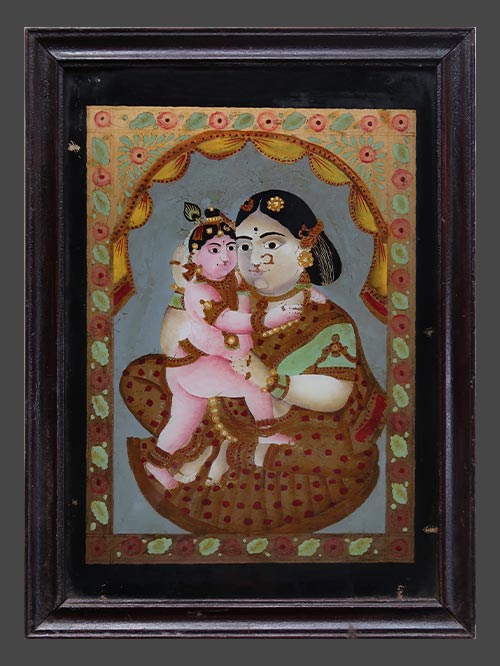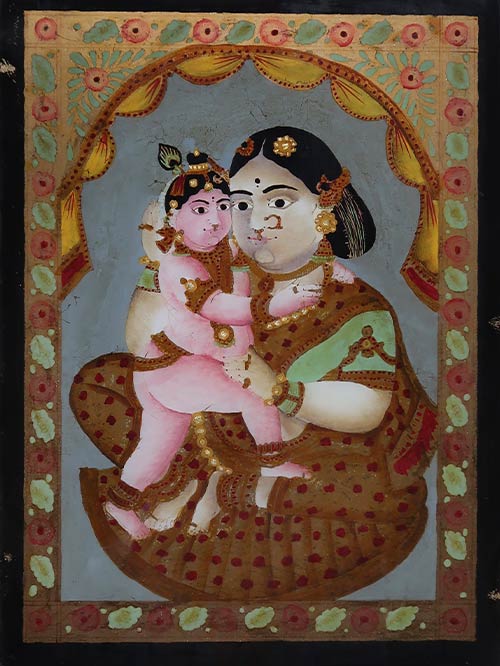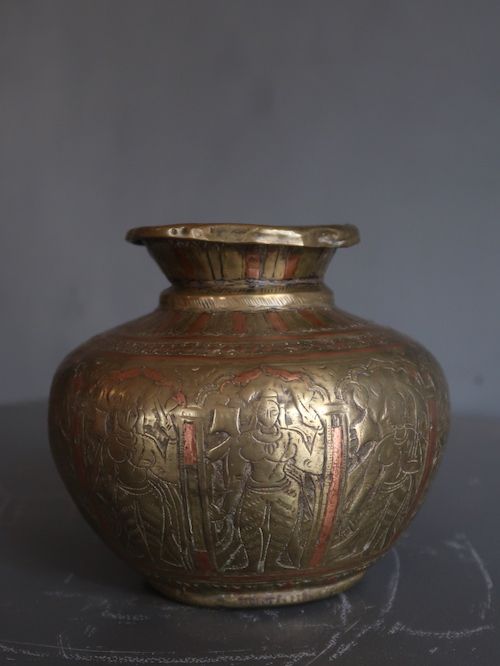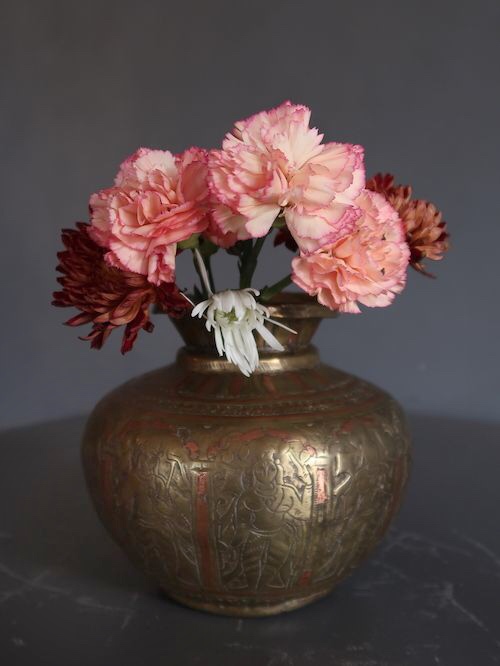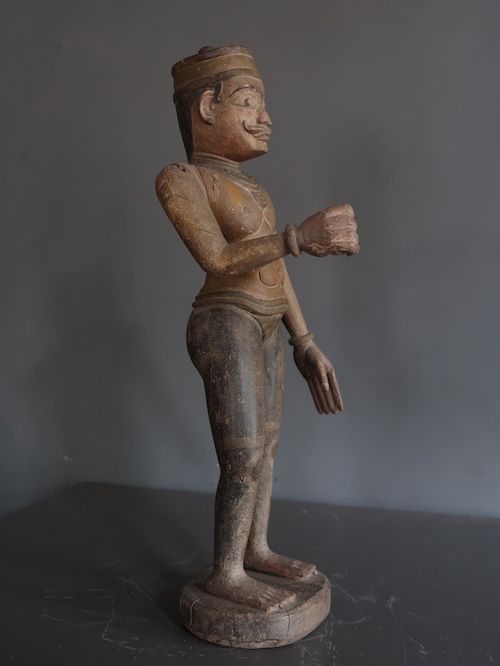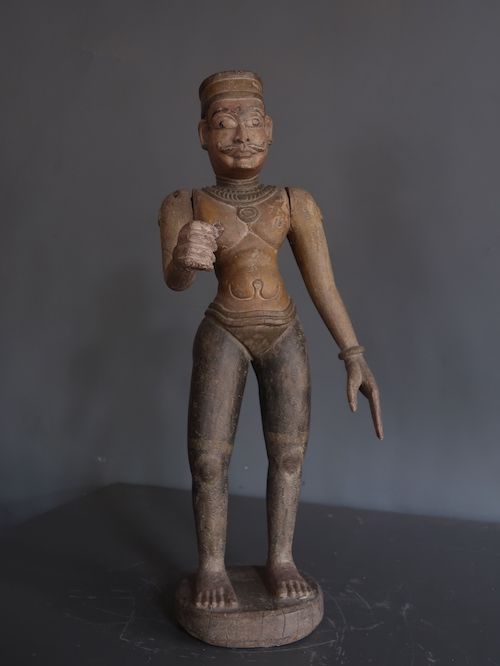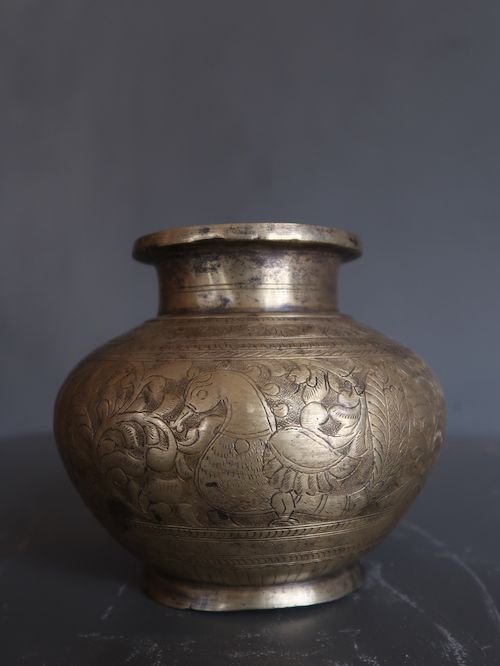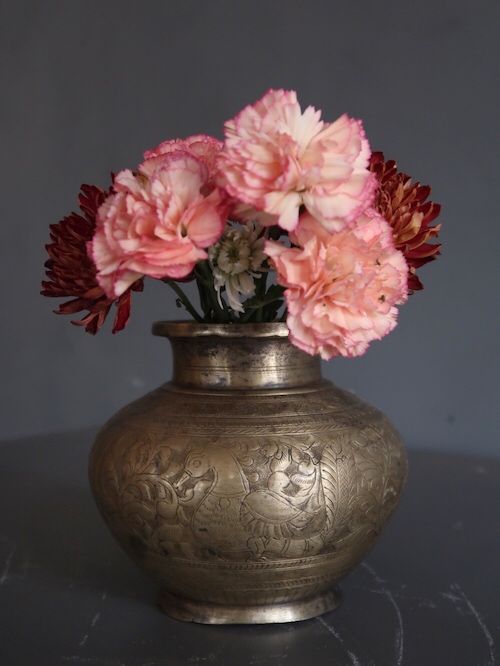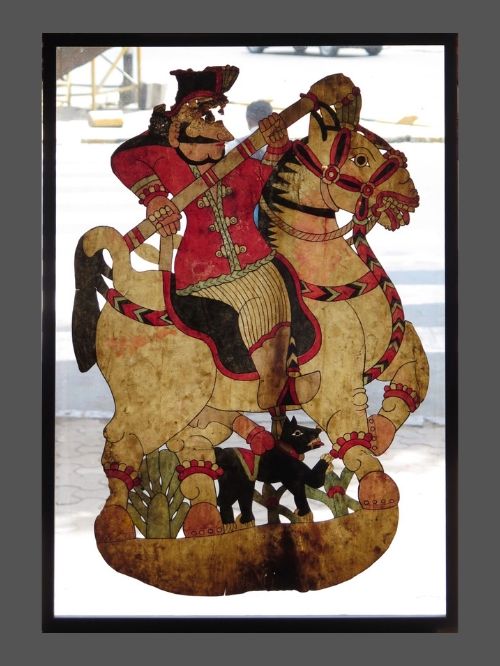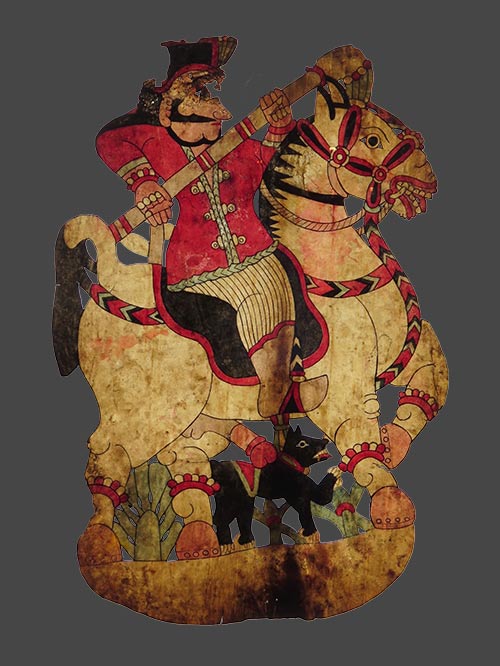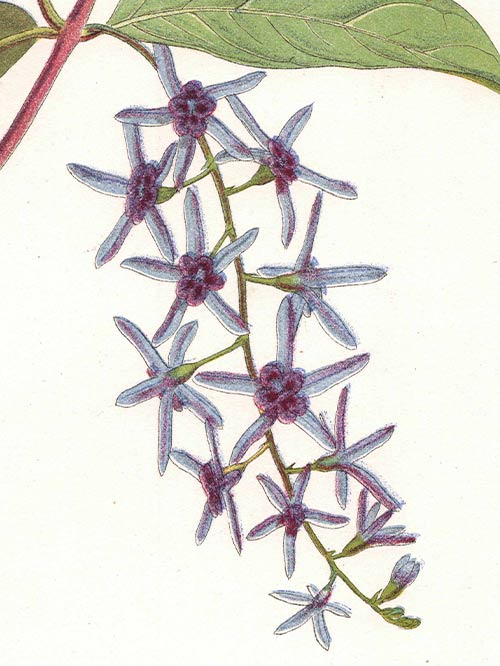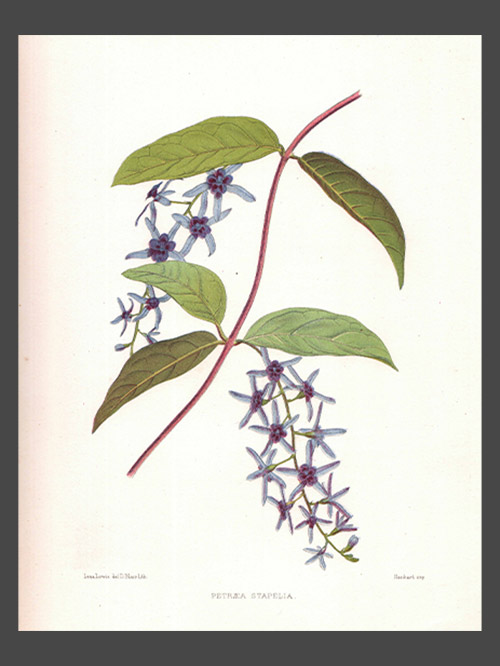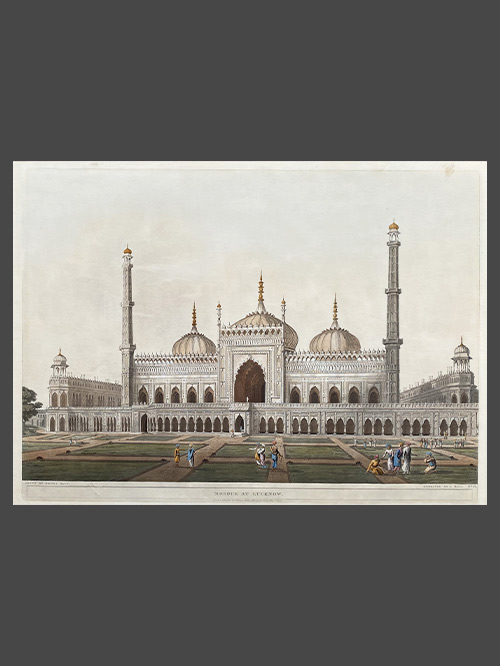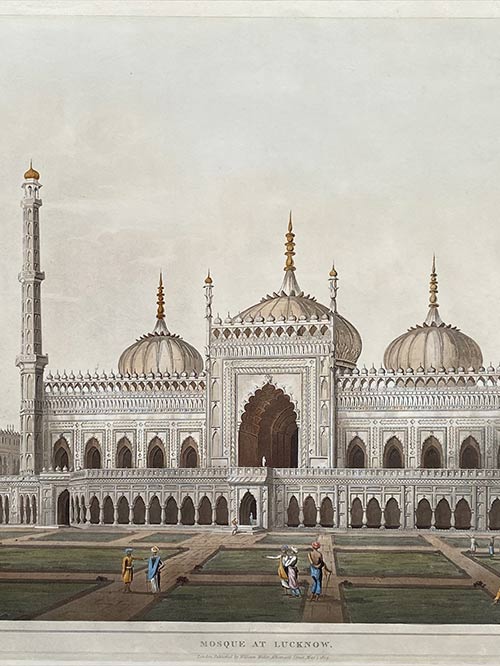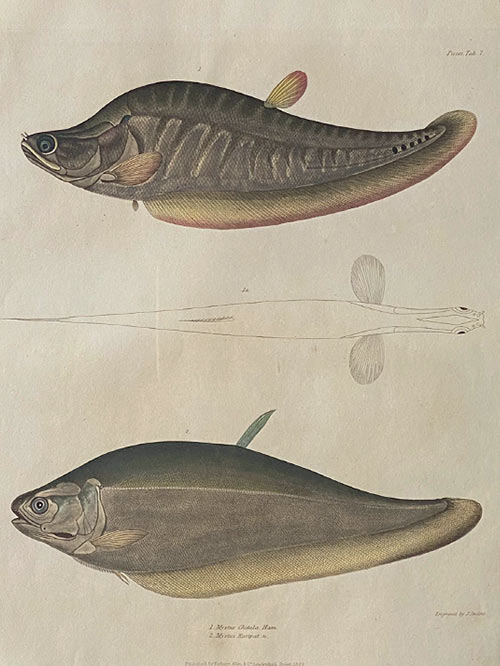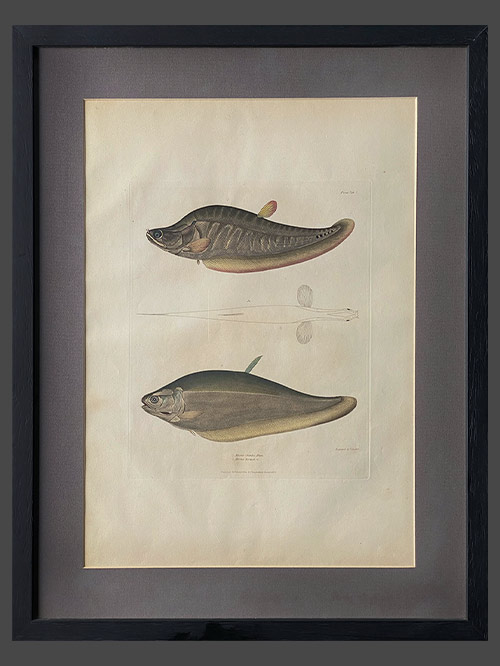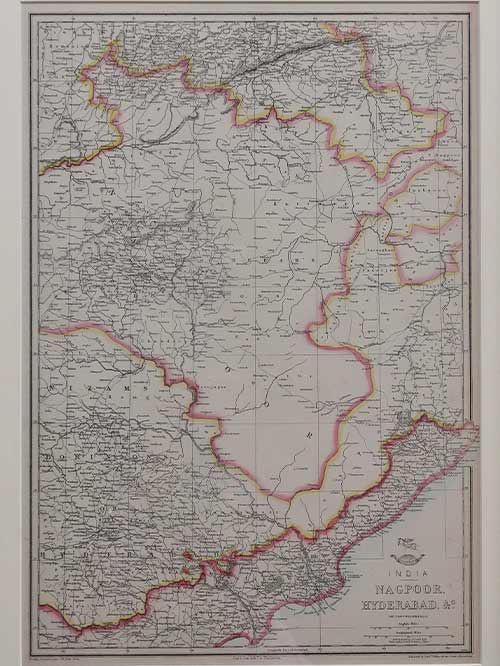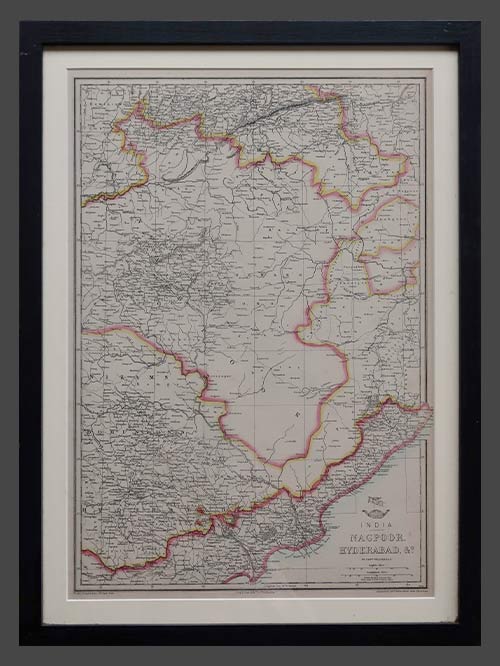Tanjore (South India)
reverse painting on glass
The infant bejewelled Krishna being nursed by his foster-mother Yashoda who is also gorgeously robed and jewelled. Krishna’s hair is tied in a topknot and adorned with jewels and a peacock feather. The rendering of Balakrishna stemming his weight on his mother’s left foot and grabbing her necklace is very realistic. The image of Krishna embracing Yashoda was probably inspired by reproductions of representations of Madonna and Child.
Reverse glass paintings were introduced into India the late 18th century from China by way of the China Trade. Indian artists adopted the technique of reverse glass painting partly on account of its novelty and also because it was a relatively inexpensive medium which could produce rich effects. The technique proved extremely popular and soon spread through western and southern India and even to former provincial Mughal capitals of Oudh, Murshidabad.
In Tanjore – a small state with an old art tradition- a distinctive school of glass painting developed in the early 19th century and continued for more than a hundred years. The style was essential Indian – it tended to repeat patterns of regional painting: images of deities, portraits and themes form the ancient myths, secular themes such as portraits of kings or nobles, courtesans and musicians. The colour was rich and the style bold and defiant. The subjects were clearly presented with a certain opulence and glamour.
Painting Size (cms): 50 (H) x 35 (L)
Painting Size(inch): 19.7 (H) x 13.8 (L)
Framed Size (cms): 57 (H) x 42 (L)
Framed Size(inch): 22.5 (H) x 16.5 (L)

